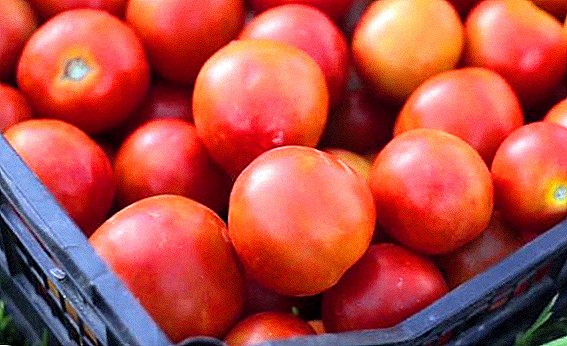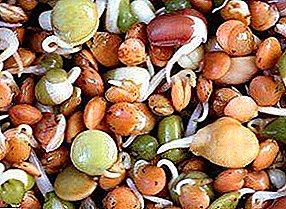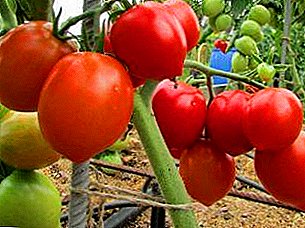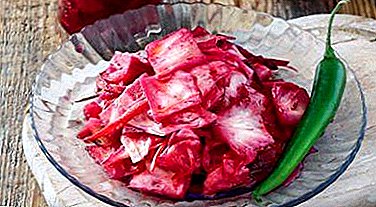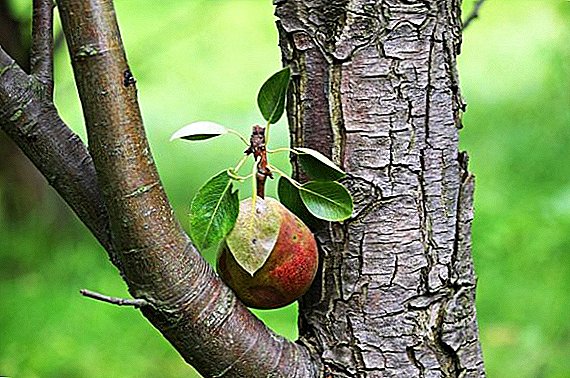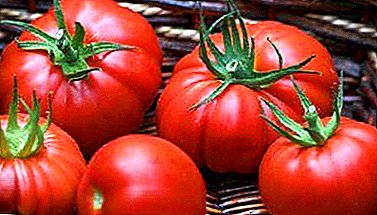 In Japan, this evergreen tree is considered a national culture, and in Ukraine it is considered a worthy exotic decoration of any park or garden. Breeders have done tremendous work, turning the majestic giant cryptomeria into a luxurious ornamental plant. Which varieties are better suited for cultivation in home gardens, what conifers need for development and how to take care of them - we were interested in experts.
In Japan, this evergreen tree is considered a national culture, and in Ukraine it is considered a worthy exotic decoration of any park or garden. Breeders have done tremendous work, turning the majestic giant cryptomeria into a luxurious ornamental plant. Which varieties are better suited for cultivation in home gardens, what conifers need for development and how to take care of them - we were interested in experts.
Did you know? In Europe, the existence of cryptomeria was only discovered in 1842. Since that time, wood is very much appreciated in landscape design.
Cryptomeria: description and types of conifers
Cryptomeria, which came to us from China and Japan, is still mistakenly called Japanese cedar. This name is so ingrained that few people associate it with a botanical counterpart. In fact, this conifer has nothing to do with cedars and belongs to the Cypress family.
In its natural environment, it lives in the subtropical conditions of the East and grows to a height of 60 meters. In a humid favorable climate, the trunk of an adult tree is beyond the power of hugging one person. In diameter, it can reach a record 2 meters. Tourists often gaze upon these coniferous giants with highly fibrous reddish-brown bark, exfoliating large stripes, and a pyramidal narrow crown of light and dark shades of green.  According to the description of wild cryptomeria, it is difficult to imagine this oriental guest in the landscape gardening design or room interior. But thanks to the efforts of botanists, a lot of decorative forms have been developed that do not exceed two meters in height and look great in single and composite plantings. In addition, the needles of some species in the winter gets yellowish and purple tones. Needles are not prickly to the touch, awl-shaped and not long. Fruits are small, roundish, brown in color. Their ripening period does not exceed one year.
According to the description of wild cryptomeria, it is difficult to imagine this oriental guest in the landscape gardening design or room interior. But thanks to the efforts of botanists, a lot of decorative forms have been developed that do not exceed two meters in height and look great in single and composite plantings. In addition, the needles of some species in the winter gets yellowish and purple tones. Needles are not prickly to the touch, awl-shaped and not long. Fruits are small, roundish, brown in color. Their ripening period does not exceed one year.
Scientists distinguish cryptomeria in a unique form and cultivate a variety of decorative varieties of this tree. Particularly popular are the dwarf forms of Vilmoriniana, Bandai-sugi, Araucarioides and spherical Еlegans compacta, Сompressa, Dacrydioides, Globosa. Some varieties have golden or smoky blue foliage.
Important! When growing cryptomeria in room conditions, experienced gardeners recommend restraining the development of the plant with a narrow, shallow pot and limiting feedings.

Choosing a place for growing cryptomeria
Cryptomeria in care is more demanding than other coniferous relatives. Therefore, in order to independently grow a tree in your garden, it is necessary to please the eastern conifer with a choice of location and lighting.
How to choose garden lighting for cryptomeria
The tree is comfortable on warm, protected from strong winds and drafts areas. Japanese cryptomeria prefers well-lit places, but is afraid of direct sunlight. It can easily adapt to the shadow, which is absolutely not displayed on its decorative. Culture does not like low temperatures, in summer it is comfortable at 22-25 º C, and in winter at + 12 ºС. Therefore, the plant is often grown in pots, which in the hot season, put up in the garden on partial shade lawns and leave for the winter until strong frosts. If the tree is not covered from the cold, it will disappear.
Growing soil
Garden cryptomeria develops well on fresh, deep and loose substrates. In addition, they must be well drained, because the tree does not tolerate stagnant moisture. Also it is impossible to plan a landing in places with a close location of groundwater and on limestone. Ideal oriental "herringbone" sourish moist soil.
Important! To create a bonsai choose seedlings with a winding trunk and thick needles.
Rules for planting cryptomeria in the garden
In areas with more severe winters, the plant is always cultivated in pots.  Due to poor winter hardiness in open field, cryptomeria can grow only in the Crimea, the Caucasus and the Black Sea coast. In these warm regions for planting evergreen tree enough to find a good place and the right substrate.
Due to poor winter hardiness in open field, cryptomeria can grow only in the Crimea, the Caucasus and the Black Sea coast. In these warm regions for planting evergreen tree enough to find a good place and the right substrate.
For winter, cryptomeria, even if it has reached two meters in height, is removed to a winter garden or other cool place.
Features care cryptomeria
Young specimens require active attention during the period of active growth. For the full development of their root system, it is necessary to ensure proper moisture of the soil and air, as well as the amount of fertilizers affect the decorativeness of the crop.
How to water the plant
In the care of cryptomeria, the main role is left to the water regime. Especially from March to August. In winter, the amount of water poured into the ground is intentionally reduced, preventing the earth coma from drying out. It is also important not to overdo it with watering so that liquid does not stagnate. Pay attention to the needles: slightly yellowed lifeless leaves indicate a lack of moisture.
Cryptomeria on the characteristics of a very moisture-loving culture. In addition to regularly moistening the soil, it is important to spray the crown twice a day.
For mature crops in the summer you can arrange sprinkling. If you cultivate the plant in room conditions, the humidity level should not be below 60-80%. In addition, the systematic airing of the room.
Did you know? In gardens, cryptomeria grows heavily, which is why owners of small plots prefer fruit crops.
Dressing cryptomeria
Feed cryptomeria when grown in open ground, preferably every spring organic or mineral complex fertilizers. If the culture is developing poorly, the procedure can be repeated again in the fall. In room conditions it is recommended to limit any feedings, especially with nitrogen-containing drugs. Young trees, regardless of the method of cultivation, need spring in the monthly two-time fertilizers. Consider: cryptomeria cannot be fertilized for two months after it is planted.
All about transplanting and breeding cryptomeria
Reproduction of Japanese cedar is possible by seed, layering or grafting.
 At home, gardeners almost never take root grainsSince the process is very laborious and the probability of a successful result is low. If you still have a desire to try yourself as a botanist, act traditionally: fill the container with a substrate of peat and river sand, fill it with seed and pour it, cover it with film or glass from above and put it in a warm, well-lit place.
At home, gardeners almost never take root grainsSince the process is very laborious and the probability of a successful result is low. If you still have a desire to try yourself as a botanist, act traditionally: fill the container with a substrate of peat and river sand, fill it with seed and pour it, cover it with film or glass from above and put it in a warm, well-lit place.
Reproduction by layering apply to garden plants. To this end, the lower thin shoots are cleaned of leaves, tilted to the ground with oblique cuts downwards and sprinkled with a small slide, pinned from above. It is important to ensure that the soil does not dry out. After the appearance of the roots do not rush to cut off the young sprout from the parent. This is done when the root system is strengthened.
 Gardeners believe that the most effective way to reproduce cryptomeria is grafting. It is better to exercise at the end of the summer. To do this, cut off the tops of healthy strong shoots, remove them from the bottom of the needle and leave for a day in the growth stimulator solution. After the done manipulations, the cutting is deepened into peaty-sandy soil and covered with a film to create a greenhouse effect.
Gardeners believe that the most effective way to reproduce cryptomeria is grafting. It is better to exercise at the end of the summer. To do this, cut off the tops of healthy strong shoots, remove them from the bottom of the needle and leave for a day in the growth stimulator solution. After the done manipulations, the cutting is deepened into peaty-sandy soil and covered with a film to create a greenhouse effect.
Having figured out how to grow cryptomeria, let's stop on plant transplants. For outdoor trees, this procedure is generally contraindicated. Replant only indoor plants every 2-3 years. At the same time, a large container with a diameter of several centimeters is being searched for, a bottom is well drained and an earthen clod is rolled over with a tree. Top sleep with fresh deciduous-sod land.
The main diseases and pests of plants and their methods of treatment
Due to isolated phytoncides, the tree is very resistant to diseases and harmful insects, however, if poorly developed, attacks of spider mites and scale insects are possible. Any insecticides will cope with them. Well-proven "Aktara", "Bi-58". For the purpose of prevention, regularly inspect the needles and branches of the tree.
Now you know what cryptomeria is and how to care for it. If you truly love planting, your efforts will be richly rewarded.


